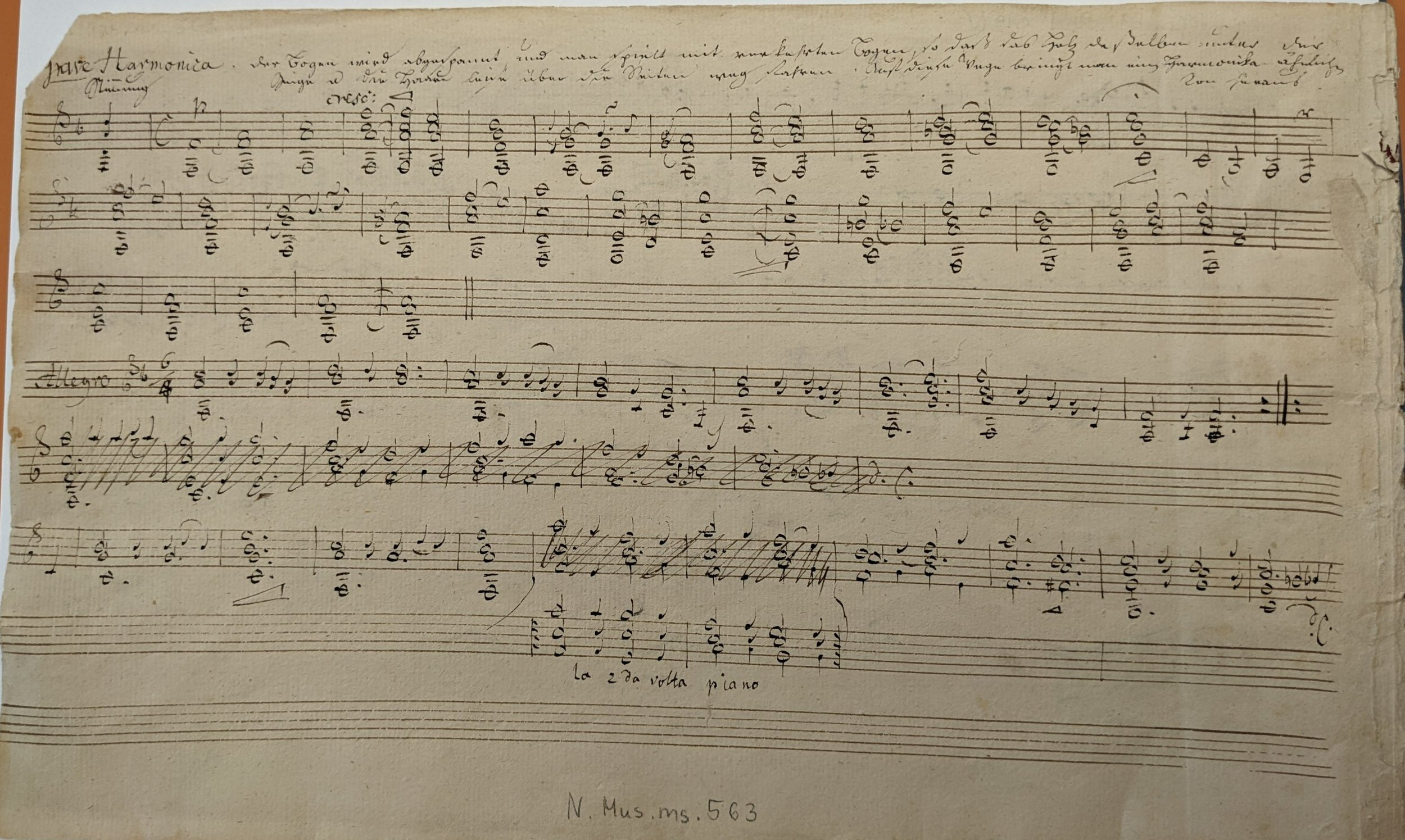Vol. 7: Sketches
F.W. Rust’s “Harmonica” for unaccompanied violin
I.
In an undated manuscript at the Staatsbibliothek zu Berlin, there’s a very unusual piece by Rust, titled Harmonica for unaccompanied violin. It’s a short sketch that exploits a very strange way of playing the violin, such that all 4 strings can be bowed at once, hopefully to elicit a sound like that of the then-trendy glass harmonica. Rust seems to have been the first to write for this particular technique.
A facsimile of the Harmonica manuscript appeared in a 1939 printing of Rust’s works, where the author presented it as an undated anomaly. I’ve been a bit bothered by this for a few years now, because without a dated manuscript it’s hard to figure out what Rust was aiming for - was it a party trick, a casual experiment, or part of a genuine attempt to push the boundaries of violin playing?
II.
I knew about Harmonica because of the 1939 facsimile, but I was gobsmacked to encounter it in person at the Staatsbibliothek zu Berlin. The Staatsbibliothek’s system of filing had accidentally obscured the fact that Harmonica was actually there at all; I thought that Harmonica had been lost during the war, as had been many other Rust manuscripts.
The manuscript containing Harmonica is actually two pieces of paper, each with music on both sides. Harmonica occupies the 4th side, and the other three sides each contain different music:
Page 1, incredibly, has more music for the strange playing technique used in Harmonica.
Page 2 holds a “Gavotte” for unaccompanied violin - to which we will return very soon.
Page 3 holds a short song sketch for soprano and piano.
Page 4 is Harmonica.
III.
Even if finding Harmonica was a surprise for me, then the unaccompanied “Gavotte” on page 2 of the manuscript was the big discovery of that day at the archives. This Gavotte is a nearly note-for-note copy of the third movement of Rust’s Sonata for Solo Violin No. 2 CzaR 81 (1795), a piece at the heart of my research. Prior to this moment I did not know of any traces of CzaR 81 existing outside of the original manuscript held in Brussels, and this little discovery has two big implications: we can narrow the dating for Harmonica, and we now have a window into the composition process of CzaR 81.
IV.
The third movement from CzaR 81 (held at the Koninklijk Conservatorium Brussel), derived from the Staatsbibliothek Gavotte sketch.
The “Gavotte” in the Staatsbibliothek manuscript must predate CzaR 81, which we know was written in 1795. But in this earlier manuscript, Rust clearly crossed out and replaced notes as he worked out the sketch, and fragments of bars appear unpredictably as ideas popped into his head. It’s not a cohesive or finished piece in this form.
Tellingly, when I examined the manuscript of CzaR 81 in-person in Brussels, the movement based on the “Gavotte” has remarkably few mistakes. For some composers, a clean manuscript would be unsurprising, but Rust was kind of a messy scribe: usually you see that he’s had to scrape ink off the paper or fix things in pencil as he worked. Yet here, in the movement based on the “Gavotte” sketch, there are almost no corrections - he was clearly copying this movement over from an existing source rather than composing it as he wrote.
V.
A particularly vigorous correction by Rust in the manuscript of CzaR 80 (1795, held at Koninklijk Conservatorium Brussel)
So what does this mean for Harmonica? Well, it helps narrow the composition date down. The “Gavotte” sketch and Harmonica clearly belong to the same era, given that they share the same manuscript. It seems unlikely that Rust would have sketched out this Gavotte and allowed it to lay unused for many years before including it in his 1795 CzaR 81; one might conclude, then, that Harmonica was composed sometime close to 1795, in tandem with his work on the unaccompanied violin sonatas. This would make some degree of sense, as the unaccompanied sonatas show a similar preoccupation with invention and novel ways of playing the violin.
And what does it all mean for CzaR 81? It’s pretty notable that the movement of CzaR 81 derived from the Staatsbibliothek sketch is the only movement that’s cleanly copied; it seems as though Rust either built the rest of CzaR 81 around it, or inserted the Gavotte material as a kind of prefab filler. The latter theory seems likely, since this movement is a slightly disjointed fit with the rest of its host Sonata.
—-
My time as a visiting scholar at the University of Cambridge is supported in part by funding from the Social Sciences and Humanities Research Council, with additional research funding from the Mitacs Globalink Research Award. The present European component of my research is supported by the American Bach Society's William H. Scheide Research Grant.



